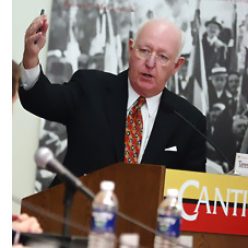THE MEDIA AND THE WAR
The Aspen Institute has just wrapped up its third annual Ideas Festival, which gathers a couple of hundred people in the Colorado Mountains for panel discussions on everything from politics to poetry. On one panel, five journalists were 30 or 40 minutes into a discussion of media credibility or the lack thereof, when a questioner in the audience stopped the conversation cold.
Where, he asked, was the media during the run-up to the war in Iraq? Why didn’t news organizations demand better answers from the Bush Administration on the reasons for the war, such as Saddam Hussein’s supposed weapons of mass destruction. Isn’t that your job?
The journalists on the panel squirmed for a minute and then one said: “Reporters thrive on conflict. The war was going to be a hell of a story.” A second panelist reluctantly, hesitatingly, agreed.
As the moderator, I was shocked. Were we really going to sit here in front of this audience and agree that the press had secretly welcomed the war as a way to sell newspapers and build ratings? That seemed a scandal to me.
And yet, I had to admit that at some point in the fall and early winter of 2002, as the military buildup in the Gulf continued and Congress voted to authorize the war, news organizations stopped asking whether the U.S. should attack Iraq and started to speculate on when, and how, and how as journalists they were going to cover it.
By Christmas, it was a foregone conclusion. The U.S. was going in. Among news organizations, the race was on to post people to the region and figure out how, technologically and editorially, they were going to cover it. Editors and producers stopped thinking about whether the war should happen, whether the Administration’s arguments made sense, and focused on what they would do about it.
Was it just groupthink? Were the media still stunned, like the rest of the country, by the aftermath of 9/11? Were news organizations reluctant to challenge a president who was standing tall in the polls? Worse yet, did they privately welcome the war as a great story?
These are awkward, uncomfortable questions, to say the least. But I have to admit that there is some truth in all of the explanations. It is certainly true that whatever the reason, the press, along with Congress, failed to nail the Administration down on why this war was necessary. I don’t really think journalists relished or welcomed the war, but they did accept it as inevitable, too easily and too soon.
So what if it happens again? What if this Administration or another begins to beat the drums for an assault on Iran, for example? You can already hear the rumblings in the think tanks of Washington. Will news organizations do a better job of demanding answers, questioning intelligence reports and challenging assumptions offered as justification? Will journalists ask the hard questions about the logic of such an attack and the aftermath?
I wonder. I know the political atmosphere has changed, given the ongoing agony of Iraq. I know the public and the Congress are more skeptical. But what about attitudes in America’s newsrooms? Have they changed?
I hope so. But I’m not so sure.
*
